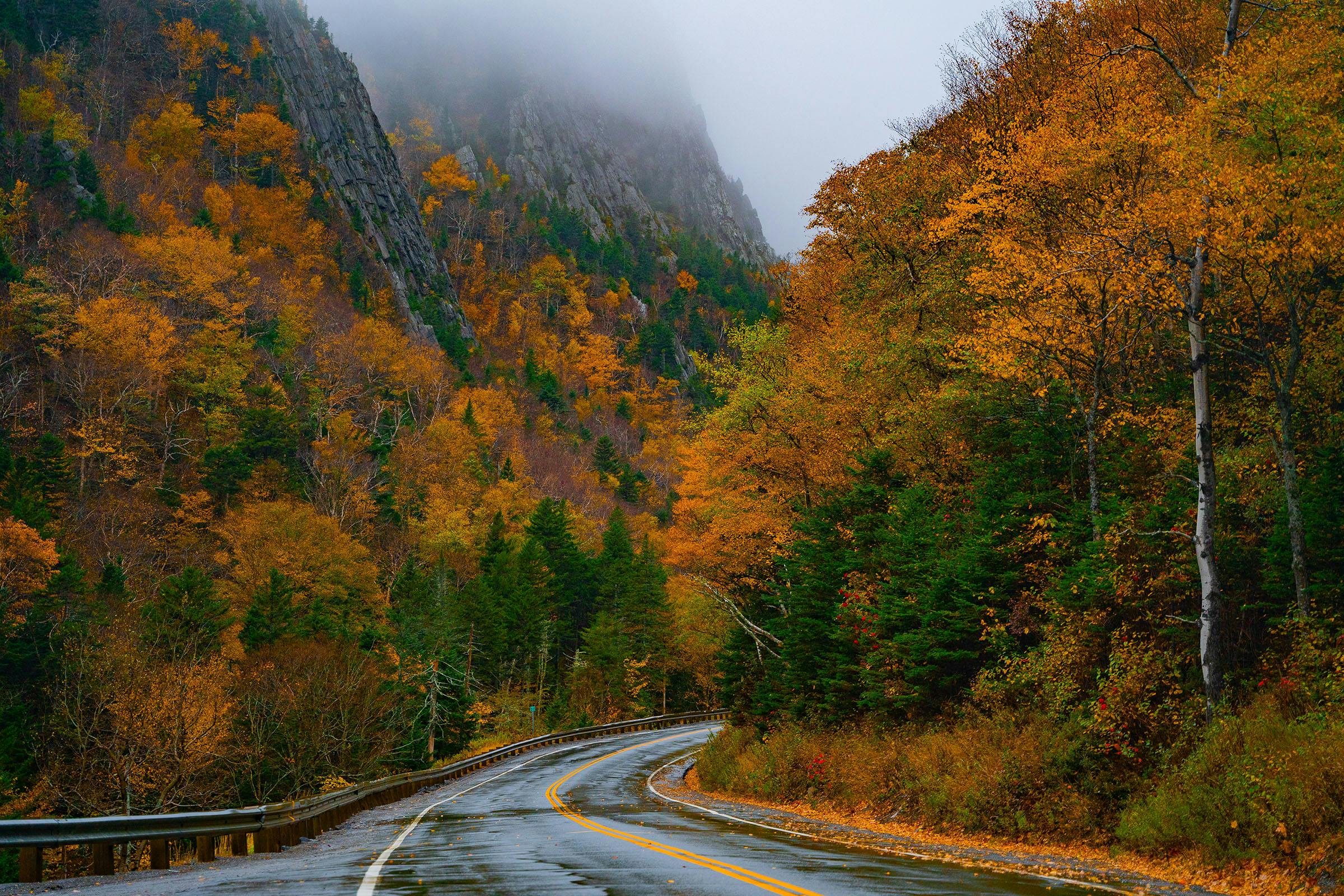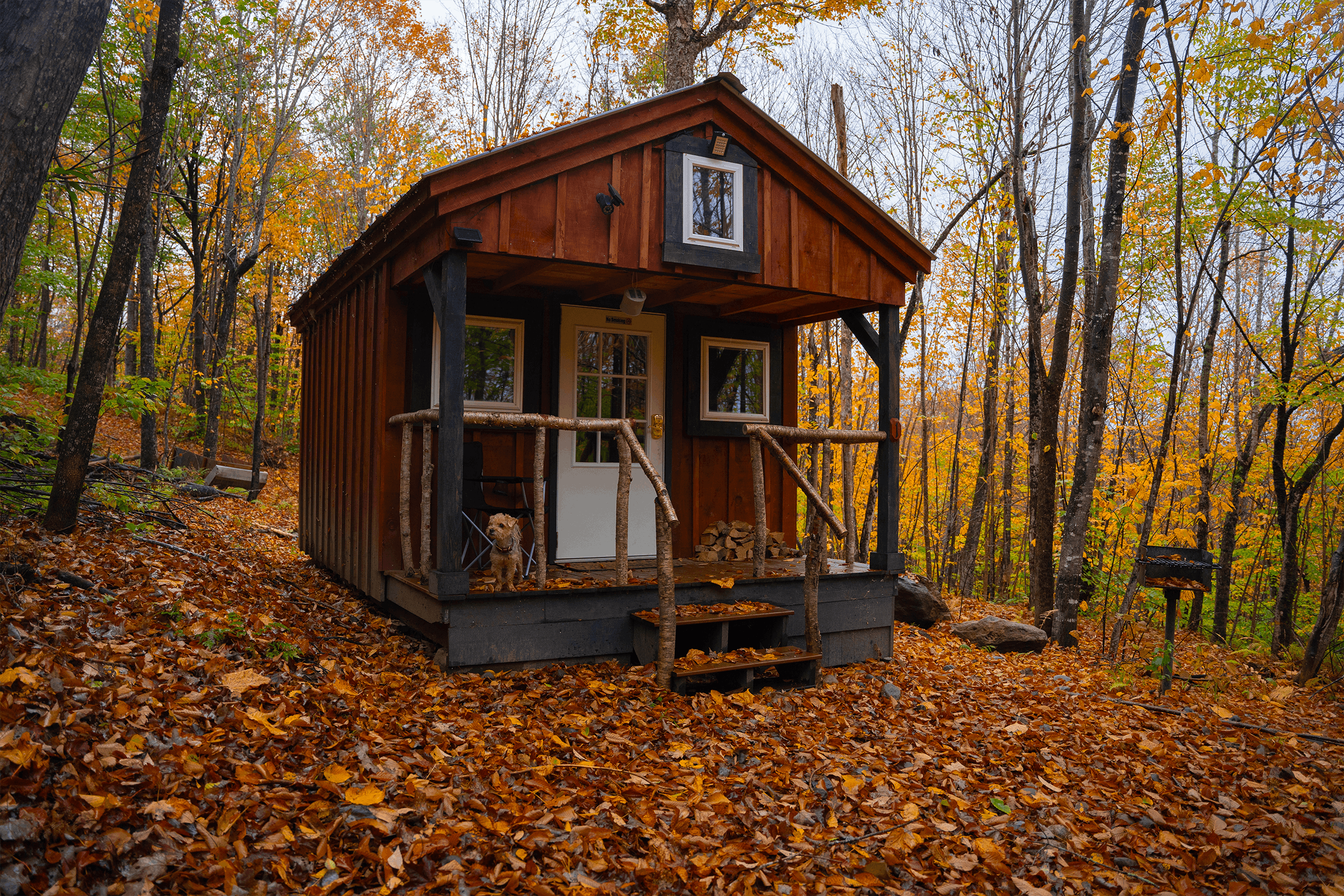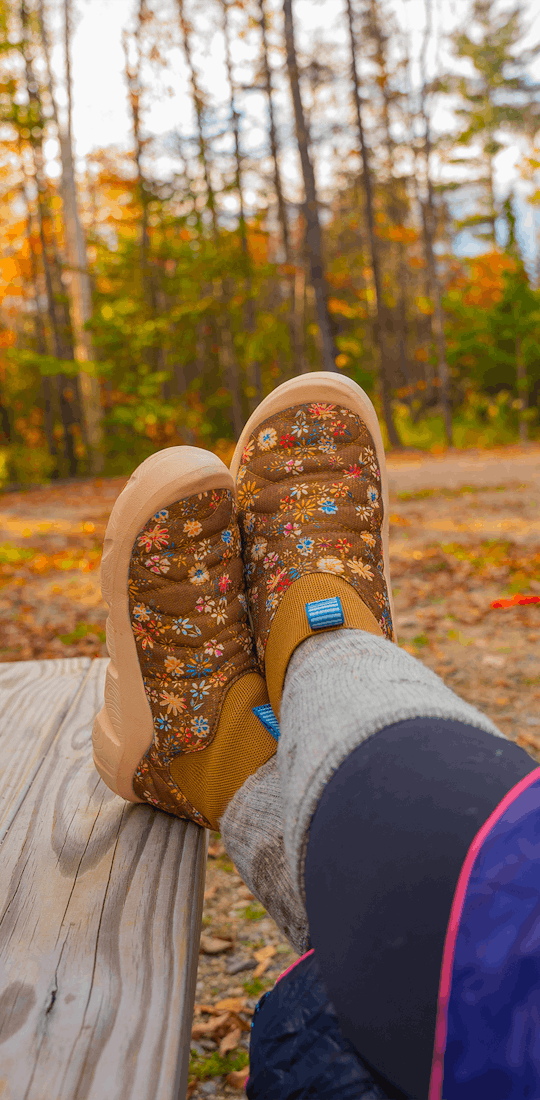Fall in New England is one of the most beautiful times of year to hop in your car and road trip through winding roads, small towns, and the explosion of color that Autumn brings.
For many, it’s the start of apple cider and pumpkin lattes, while for others it’s the pinnacle of hiking weather which draws thousands of visitors to the Northeast every year. Whether you’re just leaf peeping or exploring deeper into the foliage, here are some tips you should know before making your way out East.

1. Work Your Way North To South
Fall in New England, and the Northeast in general, moves like a wave from North to South, starting in the furthermost tips of Vermont, New Hampshire, and Maine and working its way south over the span of a few weeks. As the days shorten and the nights become colder, the leaves begin their beautiful transition into yellows, reds, and oranges throughout New England. While weather throughout the summer/fall can affect the change of color, you can’t go wrong when visiting these regions of New England between the last week of September and the first week of October: Dixville Notch State Park, New Hampshire, Crawford Notch, New Hampshire, and Vermont’s Northeast Kingdom. As you transition into the end of the first week of October - to the second week - you can start moving towards the center of these states and eventually south, exploring anywhere between the Lincoln/Woodstock region of New Hampshire and the Stowe/Montpelier region of Vermont. These areas hold many of the state’s highest peaks along with shorter foliage-filled hikes leading us to our next tip.
2. Prepare For All Season Weather
Fall in New England can mean warm and sunny 60-degree days, cold 40-degree nights, rain and snow (all in the span of a day or two), especially in the northern regions of Vermont and New Hampshire. Whether you’re camping or just venturing into the Green or White Mountains, you want to ensure you have the right gear to enjoy these wild spaces while keeping yourself safe. My recommendations include the 10 essentials along with informing someone you trust of your hiking plans and anticipated route and return time. My favorite gear for hiking, especially solo, includes my Garmin In-Reach Mini satellite device, a lightweight rain and base layer, waterproof boots, food/hydration, a headlamp, and always have an extra pair of socks! Hiking poles are a bonus as many of the hikes in these areas are rocky and muddy, so that extension of your body can go a long way to prevent falls or slips when coming back down the trail.
3. Accessibility For All Activity Levels
While the mountains of New England are known for their rocky ascents, these states also boast plentiful scenic drives, pull-away viewing areas, and accessible trails for everyone to come and enjoy what the northeast has to offer. Some highly traveled roads in New Hampshire include Lake Sunapee Scenic Drive, White Mountain Trail National Scenic Byway, and the ever-popular Kancamagus Highway. On Vermont’s list is Route 100, the Mad River Byway and Molly Stark Byway. Many of these scenic drives include stops for cider, maple syrup, vast views, and small historic towns to enjoy within a short distance from your car. In addition, for those looking for accessible trails within these regions, utilizing the AllTrails app you can select wheelchair accessible, paved, partially-paved, and more - under the Suitability feature - allowing you to find trails within the area of travel and further explore the foliage up-close.

4. Hike Low For Big Views
Fall is the time of year to seek out those lower-elevation hikes that lead to expansive views of valleys between the high peaks of Vermont and New Hampshire. When hiking at higher elevation, the colors of the foliage become muted from such a distance, therefore, finding lower-elevation viewpoints is a key tip to enjoying the expansive and vibrant views of the New England wilderness.
5. Research Conditions in Advance
This year’s foliage was very sporadic in how it turned, where it turned, and the colors varied significantly between regions due to the significant amount of rain and wildfire smoke over the summer. It is important to note the weather patterns of the area you travel to and seek out expert opinions on the anticipated foliage year. While you will still experience the beauty of New England fall, the weather patterns can play a role in what you can expect to see upon traveling to the region. Temperature and moisture are the main factors during the change of seasons. You will more likely notice vibrant color displays when transitioning from warm, sunny days to cool, crisp, but not freezing at night. Pay attention to the weather in the summer and follow local foliage trackers to best plan for where to explore.

